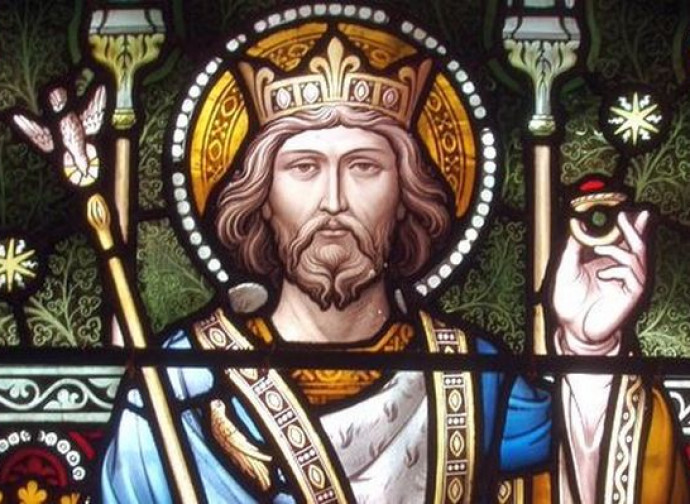Saint Edward the Confessor
Before being crowned King of England, Saint Edward the Confessor (1003-1066) lived most of his life in exile. Son of Æthelred the Unready and Emma of Normandy, when he was still a child his mother took him to Normandy with his brother Alfred to escape from the Danes, who were invading England (1013).

Before being crowned King of England, Saint Edward the Confessor (1003-1066) lived most of his life in exile. Son of Æthelred the Unready and Emma of Normandy, when he was still a child his mother took him to Normandy with his brother Alfred to escape from the Danes, who were invading England (1013). During his exile, Edward developed a strong faith, combined with the ability to accept suffering, and promised God that if his family managed to recover the crown he would go to Rome on a pilgrimage. Shortly after the death of her husband, Emma returned to England to marry the Danish Cnut the Great, who had meanwhile ascended the throne; Edward and his brother remained in Normandy, entrusted to their uncle Richard II, and became very close to their cousin Robert I. Once become Duke of Normandy, Robert attempted a military expedition to England (foiled by a storm) to defend his cousin's inheritance rights.
After a series of vicissitudes, Edward was recalled to England in 1041 and the following year, after the death of his half-brother Cnut II, he ascended the throne: his reign lasted over 23 years and was a prosperous one. Several authors report King Edward as being generous to the poor, attending Mass every day and treating each of his servants with respect. In 1045 he married Edith, daughter of Count Godwin, one of his main opponents. According to tradition, the spouses lived in chastity. Godwin, however, kept undermining his power, so Edward exiled him; though later, to avoid a civil war, he restored him to his earldom.
In the meantime, the king had abolished the tax raised to pay for the army, to weigh less on the people, and dismantled the English fleet, while agreeing with six port cities on the supply of ships in case of external aggression. On the Norman front, he felt safe because of the family bond and friendship with William the Conqueror, son of Robert I, while the conflict between Denmark and Norway made the danger of a Viking invasion look unlikely.
As a king, Edward did not forget the promise made to God, which he told his collaborators; but they advised him not to undertake such a long journey for fear that in his absence enemies from within could ruin the kingdom, causing a war. Edward then sent ambassadors to Rome to consult the pope, who allowed him to change his promise into giving the money saved for the journey to the poor and building a monastery dedicated to Saint Peter. So the king identified a site by the Thames where a church dedicated to St. Peter and a small Benedictine dormitory had existed for some time. He started to rebuild the complex and added a large donation of land around it.
Thus was born the first English Romanesque church, the nucleus of today's Gothic Westminster Abbey (Anglican from the 16th century), a traditional place for the coronation and burial of English and, later, British kings. The church was consecrated on December 28th, 1065, a week before Edward's death. He was canonised in 1161 by Alexander III (and called "the Confessor", a title then given to saints who had died from natural causes and, in his case, to distinguish him from Saint Edward the Martyr). From the 13th century, his relics have rested in Westminster Abbey.
Patron of: Kings, difficult marriages, separated spouses; English royal family




